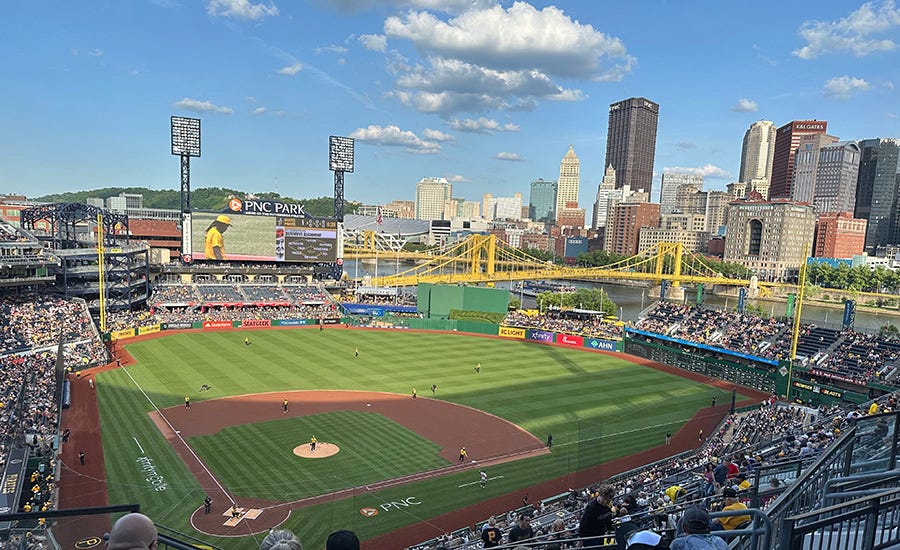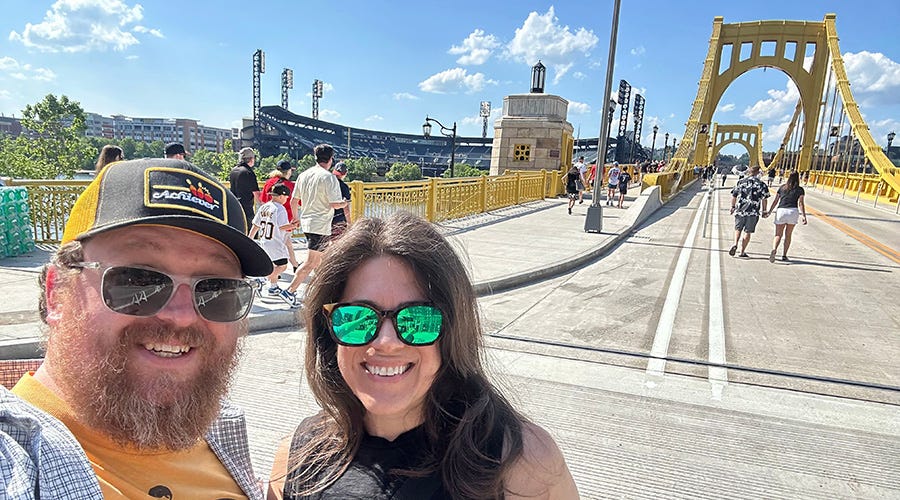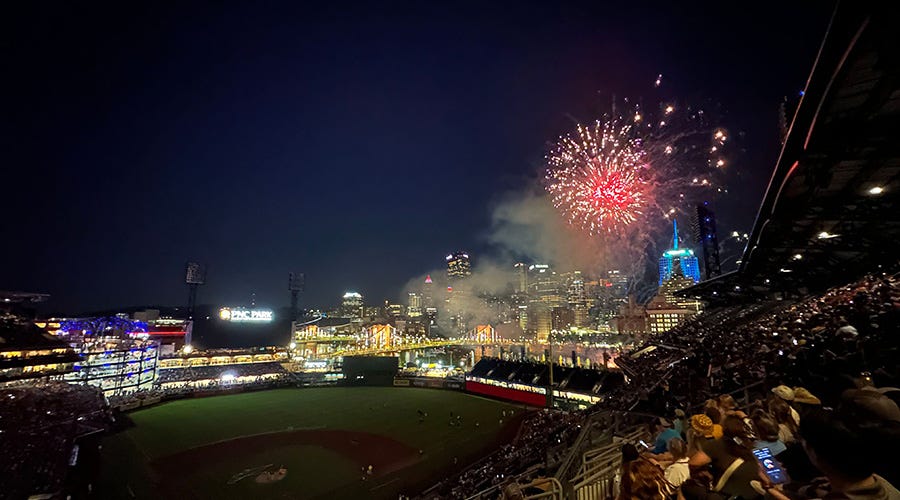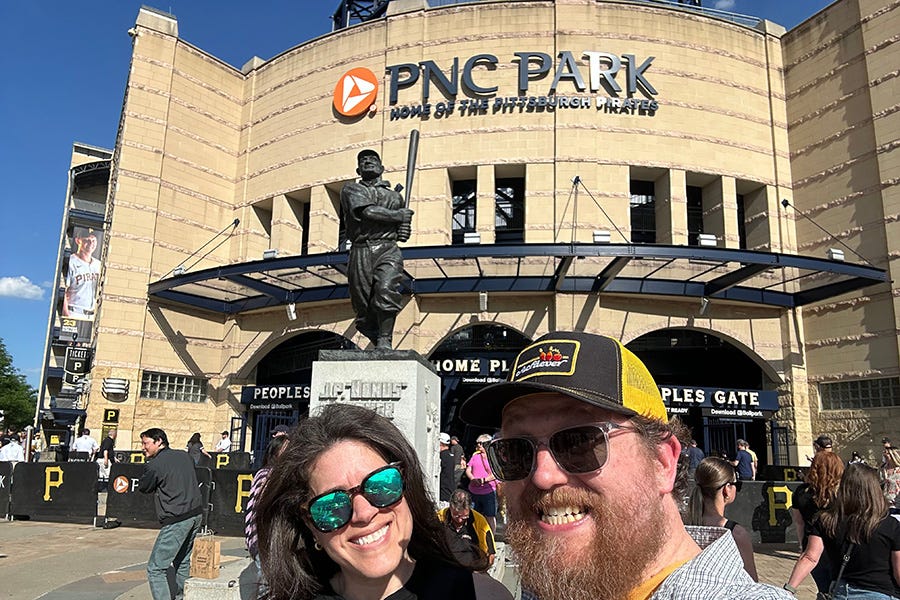Old Rust Belt cities tend to have chips on their shoulders. Once the darlings of America’s industrial expansion, a half century of decline in manufacturing, a widening wage gap in the jobs that remain, and dwindling population have left many great cities as an afterthought in our national consciousness.
I grew up in a place like this: Toledo, Ohio. If you’re not from there, chances are you never really think about it. If you know anything about Toledo, you probably learned it from M*A*S*H: minor league baseball, Hungarian hot dogs and petty crime. With advocates like Max Klinger extolling your virtues, it’s no wonder that America’s former industrial powerhouses are trying so hard to reinvent themselves and rehabilitate their reputations.

If you’re not from Pittsburgh, chances are you rarely think about it unless your favorite football team is playing the Steelers. If you know anything about the city, it’s likely the famed and historic steel industry, also possibly because you root against (or for) the Steelers.
At one point, close to half of all the steel produced in this country came from Pittsburgh mills. Despite being one of America’s major urban centers in the early 20th century, it was also perhaps the most polluted. Coal smoke was once so thick that city streetlights were turned on around the clock. An 1868 account in The New Yorker described Pittsburgh as “hell with the lid taken off.”
It wasn’t until after World War II – won, in part, thanks to a heavy infusion of Pittsburgh steel – that the city confronted its smoke-laden infamy. By the mid 1950s, air pollution in the city had decreased by 90%. The policies of city and state leaders to control emissions and clean up the city were a model for the federal Environmental Protection Agency, founded in the early ‘70s. Amid the decline of U.S. manufacturing and the collapse of the steel market, Pittsburgh positioned itself as a leader in the healthcare, education and tech industries.
Reinvention works where the will and the means are present. Where the ubiquitous smoke was once considered a sign of progress and prosperity, now the breathtaking cityscape and majestic flowing rivers do the same.1 Pittsburgh is truly a city that can take you by surprise.
I’ve been lucky enough to visit Pittsburgh multiple times, though usually just for a night on a weekend warrior band trip to Boston or New York City or Washington, D.C. With enough exposure, I’ve grown quite charmed by the city, which simultaneously embraces its history, its insularity, its enigma and its future.
The physical layout of the area is imposing, especially to flatlanders like myself. Bridges and tunnels. Switchbacks and spurs. Inclines and jumperwalks. Navigating Pittsburgh without GPS2 seems an impossible task, yet locals have done it for more than two centuries. The city is integrated with the topography: where more modern cities would artificially level wide swaths for the convenience of residents, Pittsburgh was built into the land and will forever stay that way.3
After a three decade dalliance with Three Rivers Stadium, the multi-purpose concrete donut facility that replaced the jewel box Forbes Field as home to the Pittsburgh Pirates and Steelers, the city reinvented its North Shore in 2001 with dedicated venues for both teams. PNC Park was immediately lauded as one of Major League Baseball’s best ballparks, if not the very best. Much like the city itself, PNC Park embraces the rich history of Pirates baseball, is artfully integrated into the existing riverscape, and boasts perhaps the greatest visual backdrop in all of MLB: the towering Pittsburgh skyline and iconic steel bridges that span the rivers trisecting the city.

Erin and I rolled into town a couple of hours before game time. I was determined to walk to PNC Park via the Roberto Clemente Bridge, which is open only to pedestrian traffic and lets out next to the center field gate. Very few ballparks have such a unique access point and I wanted to have that experience rather than take public transit. It was the budget-friendly option as well, since parking garages closer to the ballpark on the North Shore cost nearly double the $9 we paid to ditch the Mazda 3 under the K&L Gates building downtown.
Once across the Allegheny, we had about an hour to kill before gates opened at PNC Park, so we strolled along the riverfront before a little pregaming at the Southern Tier taproom just west of the ballpark. As expected, the place was packed, but we managed to find a couple of Adirondack chairs4 in the beer garden so we could lean back and enjoy our pints, hers a strawberry shandy and mine a schwarzbier, both delicious.
We made our way into PNC Park shortly after gates opened and moseyed around the concourse to the Miller Lite Landing for some discounted happy hour beers. Not quite as good a deal as Coors Field’s rooftop pregame special, but $8 for a tall Blue Moon is a bargain in the ballpark context.
The timing of our trip meant dinner at the ballpark was probably our best option, not wanting to stay out late after the game ended. PNC Park has a really nice variety of concessions, with decent quality and pricing. I chose pulled pork on top of mini pierogi from Manny’s BBQ5, despite my doctor having recently advised a low-carb diet for me. While I am fully aware that my pulled pork came off the Sysco truck in a plastic bag and that the pierogi were industrially produced Mrs. T’s, the whole thing hit the spot for $15. Erin’s birria nachos from the Nachorita stand under the left field bleachers were the real winner though, smothered in tender beef, queso and crema.
After downing our dinner in the patio seating area along the water behind center field, we picked up a couple of Iron City Light tallboys6 and made our way to our seats in the upper deck behind home plate.
The first time I ever caught a glimpse of the Pittsburgh skyline, I was riding shotgun in the band minivan as it emerged from the Fort Pitt tunnel south of downtown. As my eyes adjusted from dark to light, the city burst into view for a few brief seconds before again being obscured by the Fort Pitt Bridge over the Monongahela River. Pittsburgh is truly a city that can take you by surprise.
Emerging from the tunnel connecting the upper concourse to the grandstand for the very first time had much the same effect. Bottled up, constricted, claustrophobic, then suddenly released into a majestic wide open space. That glorious transition is a feature of many ballparks, but in Pittsburgh it’s truly breathtaking.
Opened in 2001, PNC Park evokes the intimate, classic ballpark feel of its predecessor, Forbes Field, home to the Pirates from 1909 to 1970. While it boasts many of the modern amenities that have become staples of the ballpark experience over the past three decades, it feels like a shrine to the national pastime, a love letter to all the Pirates players and fans that have donned the black and gold, celebrated the highest heights and endured the most crushing lows.

Even as Pittsburgh moves toward a future decentered from its industrial past, that old Rust Belt chip sits squarely on its shoulder. This city, its team and its people are not to be underestimated or taken for granted. As evidence of that, the hometown Pirates put up 11 runs in a drubbing of the visiting Atlanta Braves, a team with a payroll nearly triple their own. Pittsburgh is truly a city that can take you by surprise.
The fireworks on the field gave way to fireworks over the Allegheny at game’s end. Pittsburgh’s first family of fireworks, Zambelli, puts on an impressive show after many Friday night Pirates games throughout the season. No doubt, a large percentage of the more than 35,000 people in attendance at our game were drawn out for the post game fireworks: all but the right field stands – the only seats facing away from the show – remained packed as the bombastic display carried on for a full 10 minutes.
As the post-show smoke settled into the bowl of the ballpark, it was hard not to think of how far Pittsburgh has come since the days where smog blocked out the midday sun. We don’t have to stay the same way forever. We don’t have to accept terrible conditions or circumstances. We certainly don’t have to embrace them or excuse them.
We can imagine and reimagine. We can invent and reinvent.
NEXT GAME:
San Francisco Giants at New York Mets, Sunday, May 26, 1:40 p.m., Citi Field
Soundtrack:
Not that Pittsburgh is totally out of the woods on air pollution: annual studies routinely place the city and county among the most polluted areas in the nation.
I don’t know if this is everyone’s experience, but I have found GPS to be only marginally helpful – even downright misleading – when trying to drive through the Golden Triangle.
Shout out to my friend Corey, a city planner in Pittsburgh, who joined us at the game with his family. In addition to being a truly awesome musician, he’s an advocate for and defender of the city of Pittsburgh, even if he’s just wrong about the whole putting fries on a sandwich thing.
I am notorious for breaking plastic chairs of all shapes and sizes, and I was relatively certain this flimsy one would also be my victim. Both of us emerged unscathed from this session, thankfully.
Named for former Pirates catcher Manny Sanguillen, member of the 1971 and 1979 championship teams, and recent inductee into the Pirates Hall of Fame. Sanguillen can sometimes be found at the BBQ stand shaking hands with fans, but not on the day we visited, unfortunately.
Corey asked me if “all the good beer had been sold already.” Good one…





Corey was right about the Iron City though 'bub